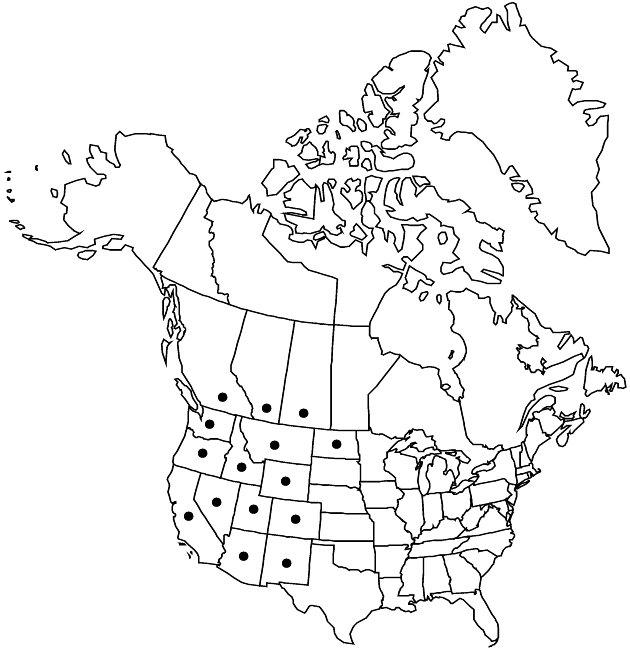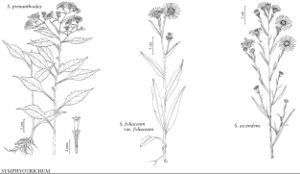Difference between revisions of "Symphyotrichum ascendens"
Phytologia 77: 276. 1995.
FNA>Volume Importer |
imported>Volume Importer |
||
| (3 intermediate revisions by 2 users not shown) | |||
| Line 8: | Line 8: | ||
}} | }} | ||
|common_names=Long-leaved or intermountain or western aster | |common_names=Long-leaved or intermountain or western aster | ||
| + | |special_status={{Treatment/ID/Special_status | ||
| + | |code=F | ||
| + | |label=Illustrated | ||
| + | }}{{Treatment/ID/Special_status | ||
| + | |code=E | ||
| + | |label=Endemic | ||
| + | }} | ||
|basionyms={{Treatment/ID/Basionym | |basionyms={{Treatment/ID/Basionym | ||
|name=Aster ascendens | |name=Aster ascendens | ||
|authority=Lindley | |authority=Lindley | ||
| + | |rank=species | ||
|publication_title=in W. J. Hooker, Fl. Bor.-Amer. | |publication_title=in W. J. Hooker, Fl. Bor.-Amer. | ||
|publication_place=2: 8. 1834 | |publication_place=2: 8. 1834 | ||
| Line 17: | Line 25: | ||
|name=Aster chilensis subsp. ascendens | |name=Aster chilensis subsp. ascendens | ||
|authority=(Lindley) Cronquist | |authority=(Lindley) Cronquist | ||
| + | |rank=subspecies | ||
}} | }} | ||
|hierarchy=Asteraceae;Asteraceae tribe Astereae;Symphyotrichum;Symphyotrichum subg. Ascendentes;Symphyotrichum ascendens | |hierarchy=Asteraceae;Asteraceae tribe Astereae;Symphyotrichum;Symphyotrichum subg. Ascendentes;Symphyotrichum ascendens | ||
| Line 41: | Line 50: | ||
-->{{#Taxon: | -->{{#Taxon: | ||
name=Symphyotrichum ascendens | name=Symphyotrichum ascendens | ||
| − | |||
|authority=(Lindley) G. L. Nesom | |authority=(Lindley) G. L. Nesom | ||
|rank=species | |rank=species | ||
| Line 55: | Line 63: | ||
|publication title=Phytologia | |publication title=Phytologia | ||
|publication year=1995 | |publication year=1995 | ||
| − | |special status= | + | |special status=Illustrated;Endemic |
| − | |source xml=https:// | + | |source xml=https://bitbucket.org/aafc-mbb/fna-data-curation/src/2e0870ddd59836b60bcf96646a41e87ea5a5943a/coarse_grained_fna_xml/V19-20-21/V20_1201.xml |
|tribe=Asteraceae tribe Astereae | |tribe=Asteraceae tribe Astereae | ||
|genus=Symphyotrichum | |genus=Symphyotrichum | ||
Latest revision as of 19:59, 5 November 2020
Perennials 20–60 cm, colonial; long-rhizomatous. Stems 1–5+, ascending to erect, densely and uniformly strigose, especially distally. Leaves (grayish green) thin to firm, margins entire, apices acute, faces glabrous or strigose; basal usually persistent, petiolate, blades oblanceolate, 50–150 × 5–12(–15) mm, bases attenuate or cuneate, margins entire, apices usually acute; proximal cauline sessile or subpetiolate, blades oblong to narrowly obovate, 50–120 × 5–12 mm, bases attenuate or cuneate; distal sessile, blades 30–70 × 4–10 mm, reduced distally, bases cuneate to ± rounded. Heads in paniculiform arrays, branches ascending. Peduncles moderately to densely strigose, bracts 1–4, linear to oblanceolate. Involucres campanulate, 4–7 mm. Phyllaries in 3–5 series, narrowly oblanceolate or linear (outer) to linear (inner), unequal, bases indurate, margins entire, green zones obovate to elliptic, apices obtuse, faces densely strigose. Ray florets (10–)15–40; corollas violet, laminae 8–13 × 1–1.5 mm. Disc florets 25–65(–80); corollas yellow, sometimes purple-tinged, 4–6 mm, lobes triangular, 0.4–0.8 mm. Cypselae brown, cylindric to obovoid, not compressed, 2–3.5 mm, 3–5-nerved, faces hairy; pappi whitish, 4–7 mm. 2n = 26, 36, 52.
Phenology: Flowering Jul–Aug.
Habitat: Meadows, grasslands, damp areas in sagebrush steppe and Ponderosa pine woodlands
Elevation: 500–3200 m
Distribution

Alta., B.C., Sask., Ariz., Calif., Colo., Idaho, Mont., Nev., N.Mex., N.Dak., Oreg., Utah, Wash., Wyo.
Discussion
Symphyotrichum ascendens is widely distributed in the Great Basin. It is an allopolyploid derived from the hybrid between S. spathulatum (x = 8) and S. falcatum (x = 5). Chromosome numbers differ markedly in their geographic distribution, 2n = 26 prevailing in the southwestern part of the range, and 2n = 52 in the northeastern part (G. A. Allen 1985) Backcrosses to both parental species or hybrids with related taxa are sometimes seen where the ranges overlap.
Selected References
None.
